If your school or program is considering instituting a mobile program into their curriculum, then you might need to develop an academic policy to keep everything in check. Below we have a general outline of an academic policy that can help you develop your own.
Academic Policy for Smart Devices

I. Classroom Usage
No electronics are allowed during any exams. Students may not be able to see/hear/feel these devices during exams [devices are to be left in purses/backpacks, no devices on any person]. If faculty allow a calculator on an exam, the calculator will be provided by the school. Students with special accommodations requiring a special device must have documented approval from the dean’s office.
II. Clinical Usage
A. Smart devices are to be used in the clinical areas, and for lab activities and classroom exercises as directed by faculty. Use of portable electronic devices in clinical is regulated by the clinical agencies, local, state, and federal regulations and laws. All students are fully responsible for following all regulations of the Health Insurance Portability and Accountability Act (HIPAA) guidelines and for following HIPAA guidelines when using their smart devices in the clinical or other settings.
B. Personal health identifiers (PHI) must be removed from any patient data students collect on their smart devices. Additionally, students will use a password to protect access to information on their smart devices. Infection control precautions must be maintained when using smart devices in patient care areas. Students must adhere to professional standards for all communication including maintaining confidentiality, proper conduct for communication and communicating appropriate material.
C. Smart device telephone and camera functions must be turned off during clinical and lab sessions by placing devices in “Airplane” mode [see below for instructions to place phones in “Airplane” mode]. Students are fully responsible to ensure that they adhere to all regulations at all times whether at school, at clinical, on break, or anywhere else. This includes proper management of confidential client information.
D. With the exception of specified course required activities, sending or receiving text or other messages on the smart device during class, clinical or lab is not permitted.
E. Using the internet for personal, non-school related functions is strictly prohibited. Inappropriate smart device use or violation of HIPAA guidelines is cause for termination from the School of Nursing.
F. Students will sign the Medical Center electronic compliance form [Authorization to Capture/Use PHI on Portable Devices] prior to entering any clinical setting at any facility annually for all courses and quarterly for Fundamentals. This form will be placed in each student’s file.
III. Using Airplane Mode – (iPhone)
A. Go to “Settings”
B. Tap“Airplane” mode ON
C. Tap WiFi ON
D. You will not be able to receive phone calls/text messages online. You will be able to
get online clinical applications.
E. If students need to give a number to family members for contact, give the facility number provided in the syllabus.
IV. Safeguarding of Data
The student will implement protective measures, such as encryption, for restricted data to safeguard the confidentiality or integrity of the data in the event of theft or loss. The student will ensure that the device will never be left unattended during use in the clinical setting. The student will use strong password protections and encryption technology as commercially available. The student will ensure proper destruction of all PHI from the device immediately after its intended use. If the device is lost or stolen, it will be immediately reported to appropriate personnel and/or security.
V. Handheld Device Hygiene
A. Wash hands before using handheld device.
B. Avoid using device with contaminated gloves, plan ahead for procedures.
C. Wipe down handheld device using solutions ONLY recommended by manufacturer.
D. Avoid areas that can possibly contaminate device, e.g., laying device on bedside
tables or patient bed.
E. Avoid, if possible, taking device into isolation rooms. Help minimize transmission of
organisms by placing device in sealed ziplock lab specimen bag or leaving device
with instructor outside of isolation rooms.
F. Think before using in clinical setting. Remember handheld device will be brought
home and used with family and friends.
